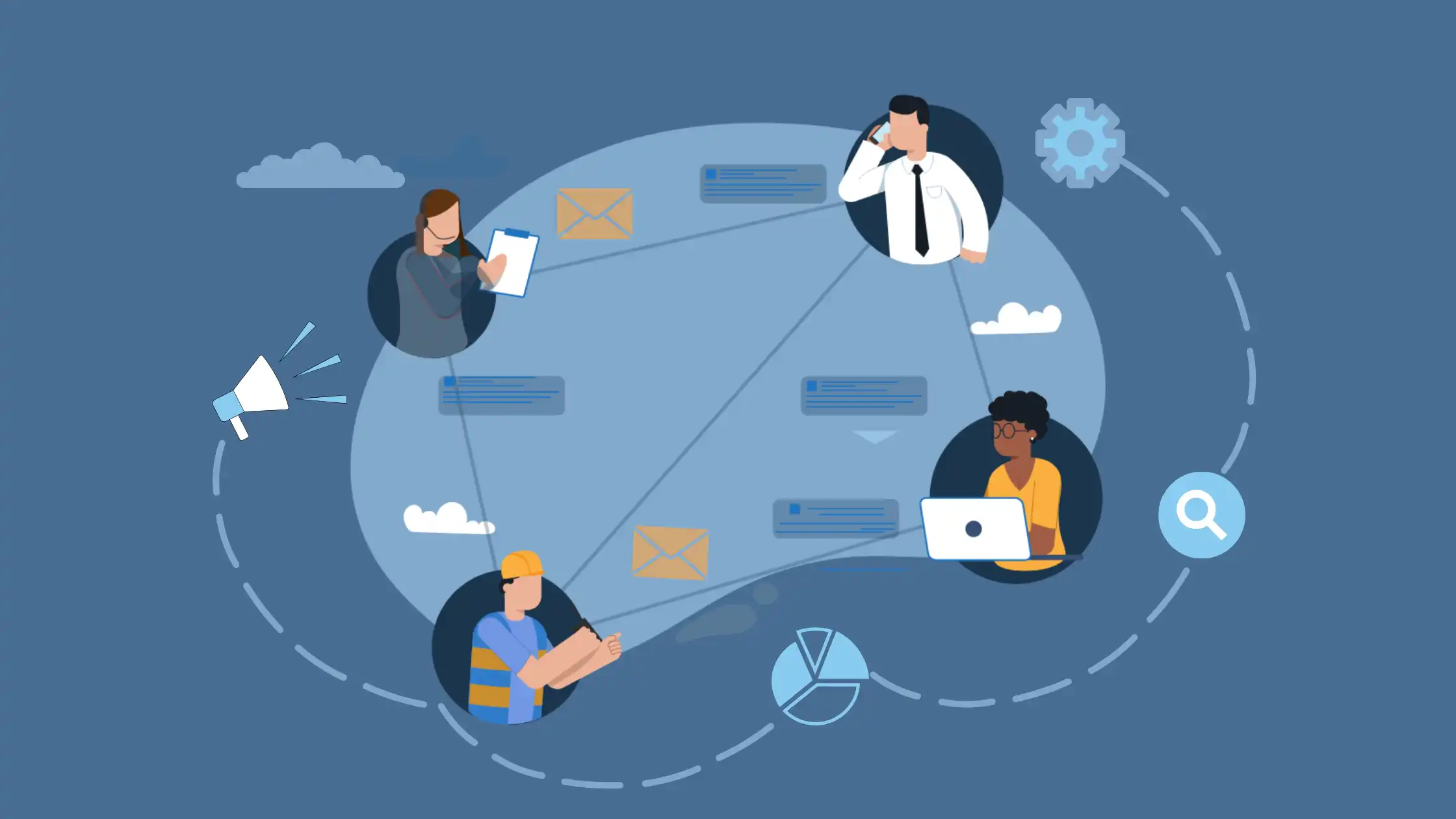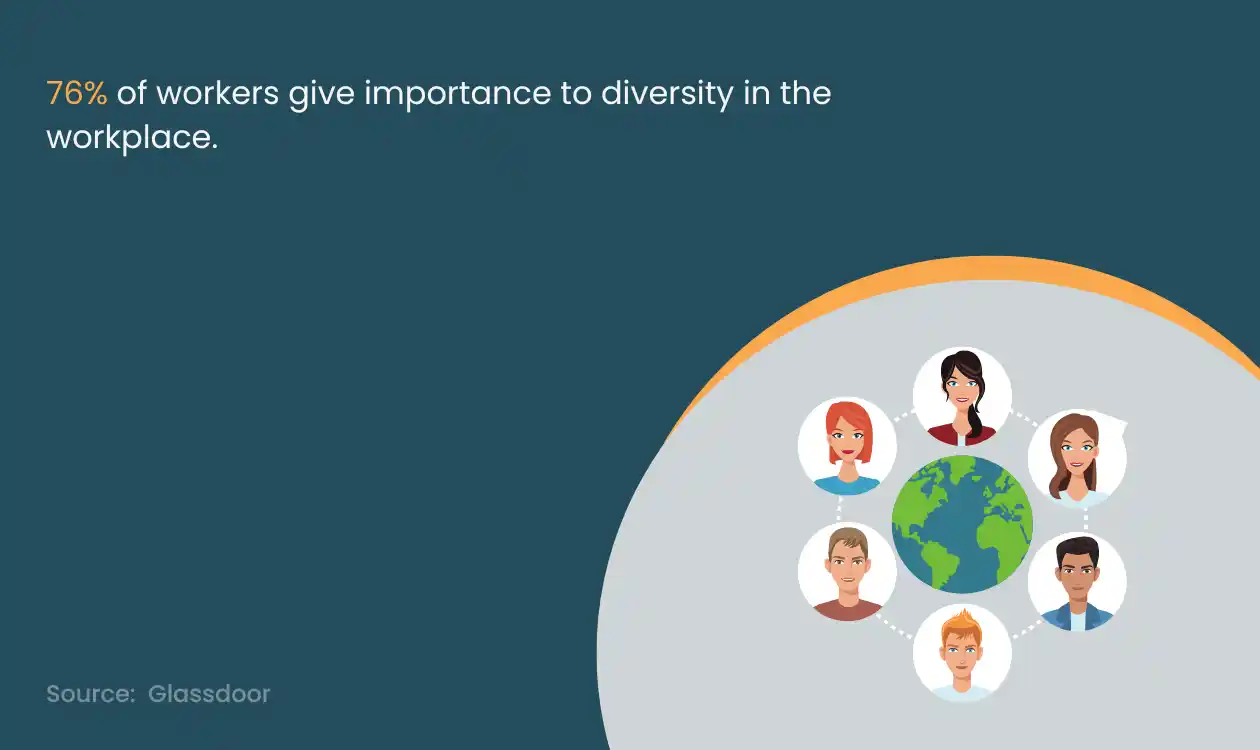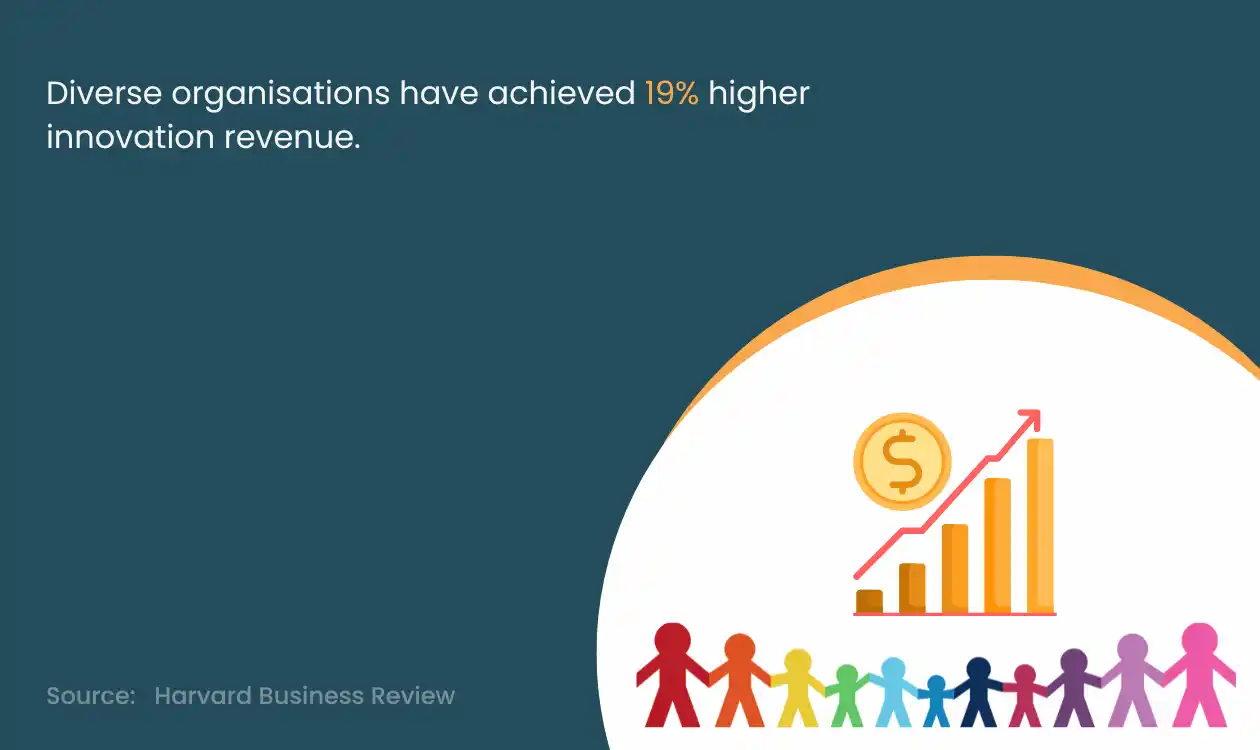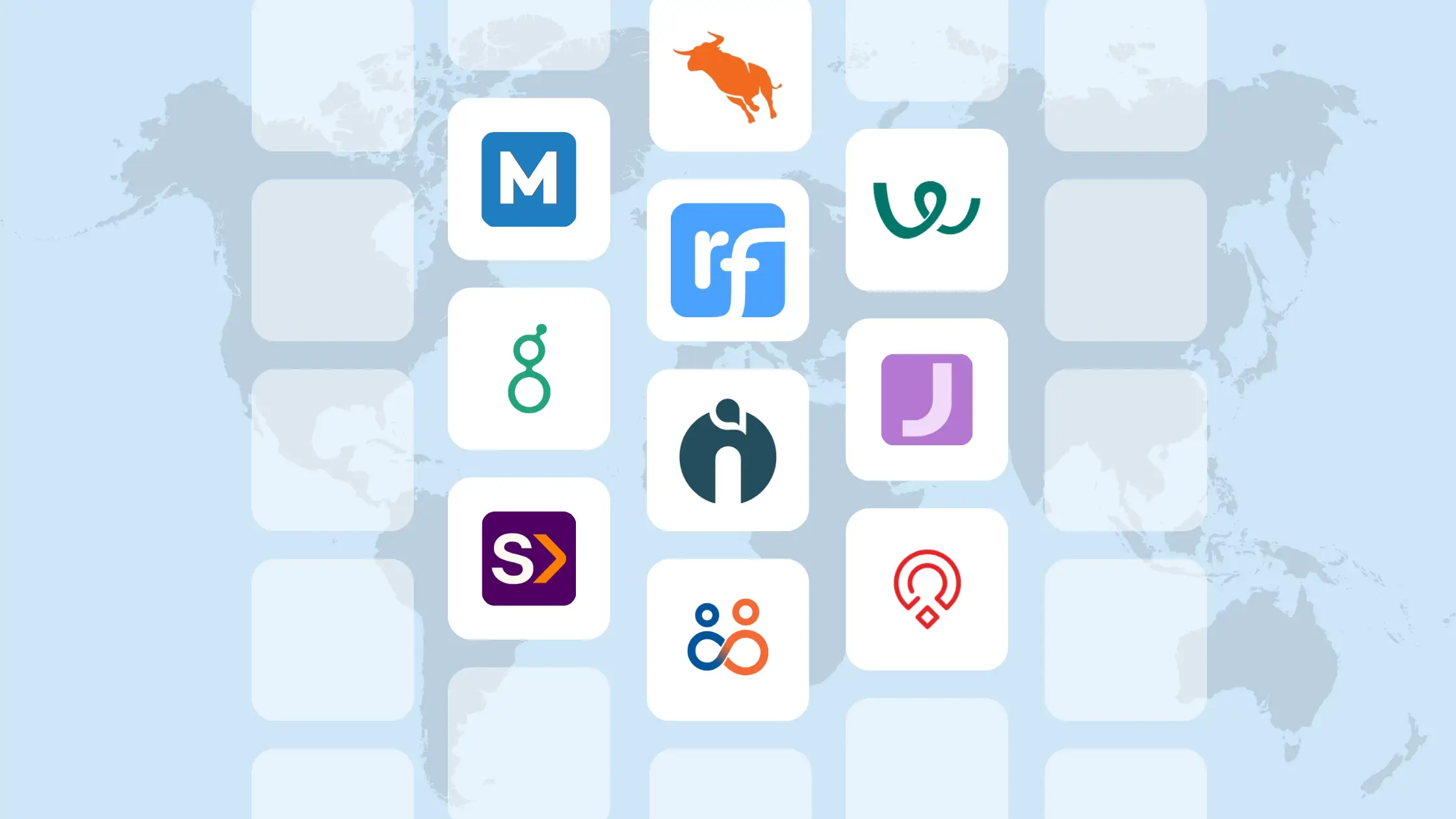While discussing the diversity; that came into existence in 1940, the civil rights movement in 1960 successfully extended further opportunities for cultural and ethnic diversity in the workplace. However, looking towards the evolution of the concept of diversity till 2022, it took decades for all business leaders to understand the value and meaning of diversity, equity, and inclusion.
Diversity within the Workplace
Diversity within the workplace refers to an inclusive culture where different groups and perspectives are represented, and everyone's contributions are valued and respected.
Diversity can lead to better decision-making, innovation and creativity, and a more positive work environment. But it also challenges every recruiter in building a diverse talent pipeline.
Moving ahead for more insights on building a diverse talent pipeline, let us understand what a talent pipeline is. And the importance of diversity and inclusion in the workplace with the DEI initiative. For more understanding, here are some examples of workplace diversity, equity and inclusion.
DEI initiatives examples
Hiring professionals must practice diversity recruitment, inclusive language, bias training, mentorship and sponsorship programs, employee resource groups, flexible work arrangements, and pay equity are examples that will help to build strategies for them to create a diverse talent pipeline.
What is a Talent Pipeline?
A talent pipeline is also known as a candidate/employee pipeline or a group of skilled candidates your organisation would like to onboard for current or future positions. The significance of the talent pipeline is that it provides consistent access to your hiring team to engage potential candidates for prospects.
Building a talent pipeline is not the only solution to make your business compatible in a rapidly changing market. So, the recruiting team has become more focused on increasing brand reputation through effective recruitment marketing, prioritising mainly diversity and inclusion.
Below are the benefits of diversity and inclusion in the workplace that will help you answer why it is essential.
The Key Benefits of Diversity, Equity, and Inclusion in the Workplace
-
In fact, millennials and Gen Z are the most diverse generations now. Therefore, every organisation must emphasise diversity, equity, and inclusion to build an extensive talent pool for growth.
-
A significant benefit of a diverse workplace is that it drives more creativity and innovation, motivating the team to think outside of the box.
-
Giving your employees a safe space to voice their ideas on various topics, from new products to new markets, leads to more diverse options when making decisions or solving problems.
-
One research by McKinsey & Company mentioned in its report that companies with diverse management better compete with their competitors.
Knowing the importance of diversity, equity and inclusion, one should also know how to promote DEI in the workplace.
How to promote diversity, equity and Inclusion in the workplace
1. Diversity - Use diverse job boards, ensure representation at every level, and address and eliminate biased hiring practices
2. Equity - Have transparency around wages, and implement a workforce education program
3. Inclusion - Support open communication, be pronoun-friendly and accommodate all holidays.
Once you've promoted DEI in the organisation, the next step is designing and implementing your DEI strategies.
8 Proven Strategies for Diverse Talent Pipeline
1. Diversify the employer's brand
To know the importance of diversifying your employer's brand is to look into the current facts that Glassdoor has published in its report; it shows that 86% of employees and job seekers consider company reviews and ratings before applying for a job, while 50% of candidates admit that even if they are offered higher pay, they are never willing to work for an organisation with a negative reputation.
Promoting your employer's brand on different job boards focusing on DEI can effectively diversify your recruiting process. Moreover, Glassdoor and LinkedIn are tools for potential job seekers to evaluate your company before applying. This insight can be an effective strategy for building a diverse candidate pipeline.
2. Leverage diverse channels to post jobs
There are various platforms available to post your jobs. However, posting and promoting a job on a specific forum, for example, only on LinkedIn, will prevent you from potentially sourcing diverse talent from the massive talent market. Therefore, it is always better to leverage all the various platforms available to post jobs that help reach underrepresented groups and minorities.
3. Write an inclusive job listing
The first important step that every employer needs to work on is to change techniques to write an inclusive job listing that should be significantly comprehended and understood by any candidates, irrespective of their backgrounds.
Certain studies show that the languages you use in your job description either encourage diverse applicants to apply for a job or might turn them off from doing the same. Hence, you must write a job description without bias in age, gender, race, or other ethnic-coded words.
Using such strategies highlighting diversity, equity, and inclusion while crafting a job description will help you broaden your diverse talent pipeline.
4. Encourage diverse candidate referral programs
Encouraging diverse employee referral programs can be a productive way to build a diverse candidate pipeline.
Although it enables taking advantage of your existing team that will have a network of people from different backgrounds, this can be truly a faster way to expand your candidate pool; especially, it becomes more helpful if your existing employee recommends any talent from minority groups.
5. Use an AI-driven recruitment management system
Leveraging an Artificial intelligence-driven Applicant Tracking System is one approach to ensure that bias is completely removed from your resume screening process.
Although automation in the latest Talent Acquisition Software helps shortlist high-potential candidates based on their skills & experience free from any favouritism, it also supports blind screening that overlooks the applicant's gender, name, ethnicity, etc., to maximise the chances of making the pipeline more diversified.
6. Build a structured interview process.
A structured interview process is quite a simple way where the same sets of questions are asked, incorporating skill assessment for all the qualified candidates. It also includes a candidate scorecard, a standardised procedure for evaluating candidates based on predefined questions that prevent hiring bias and support creating a more diverse work culture.
So far, structured interviews encourage an equitable and rigid hiring procedure that will likely build a diverse team by eliminating unfairness among all the job applicants.
7. Prevent unconscious bias
No matter how impartial you try to be, the risk of unconscious bias will always remain. However, to minimise this while creating a diverse talent pipeline, ensure that you are developing a diverse recruiting panel that represents hiring managers of all ages, genders, abilities, and ethnicities.
A significant way to identify unconscious biases is by educating your recruitment team through practical training to understand how bias works and what actions they should take to mitigate the challenges.
8. Keep in touch with candidates that declined
Make a proper follow-up with prospective applicants who have declined your offers. If you discover that diverse talents are falling faster than non-diverse ones, investigate it by communicating clearly and receiving feedback from them.
This will allow you to identify drawbacks and encourage you to set better strategies that will help attract and retain candidates. Building a diversified talent pipeline necessitates a deliberate and careful approach, which will pay off in the long term by allowing you to reap the benefits of a more profitable, vibrant, and multifaceted workplace culture.
Final Thought on the Diverse Talent Pipeline
After identifying the importance of diversity, equity, and inclusion, having considered the recent fact that has been published by the CNBC Survey, which has indicated that around 80% of employees are willing to work for a company that encourages DE & I, no one might have imagined that COVID-19 would have been the major turning point for the greatest transformation in the entire world's economy.
But, most importantly, the post-pandemic has significantly altered how we work and inspired us to be more futuristic.
It's never too late to become the better version for tomorrow by gaining key takeaways from top-notch organisations that have successfully set the benchmark with their impactful branding and are still envisioning the same.
For example, an article by the Economic Times stated how well-known FMCG Britannia aimed to have 50% women in their entire workforce by 2024.
On the other hand, a famous brand, Titan, promotes a more diverse & inclusive workforce by making a few amendments to its policies.
.
.
.
Still, want help with conducting hiring tasks efficiently? If so, then click the below image and book a demo.
See how our highly scalable recruitment software can help you streamline your hiring process from sourcing the candidates to hiring the most suitable talent faster and more effectively.












